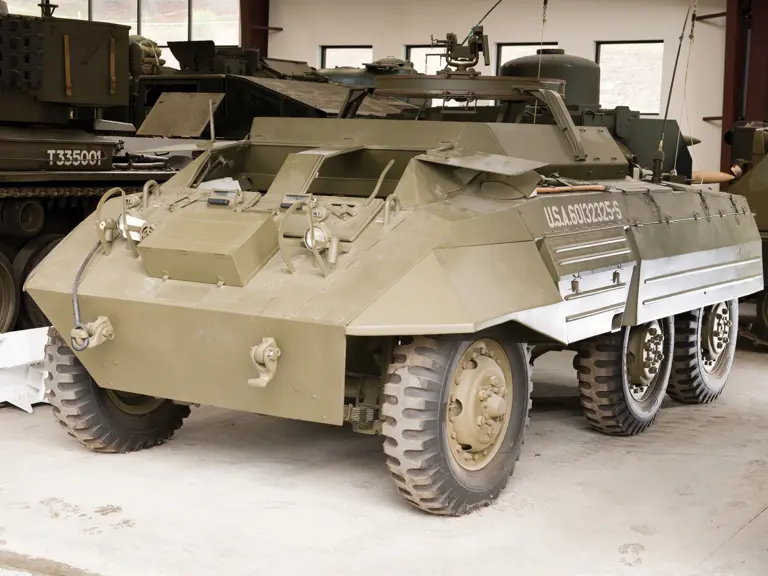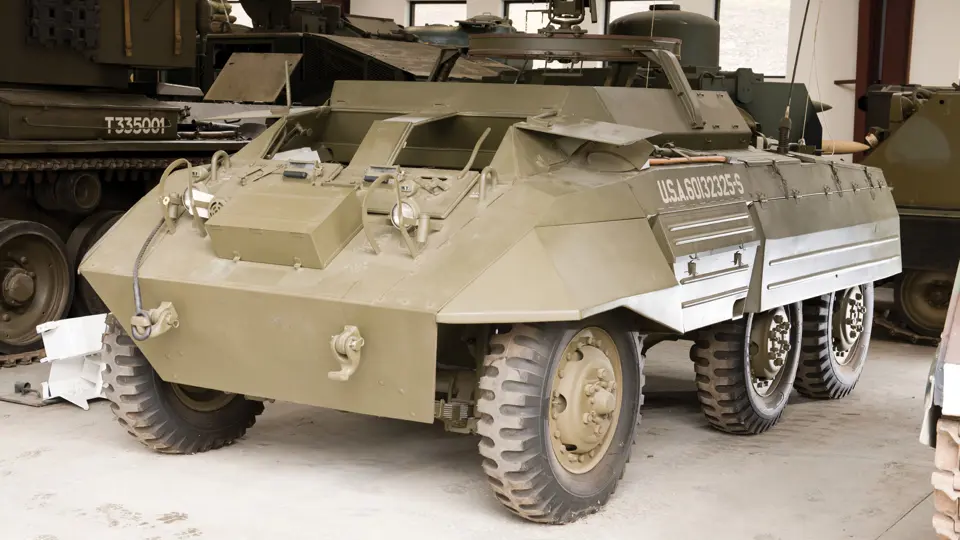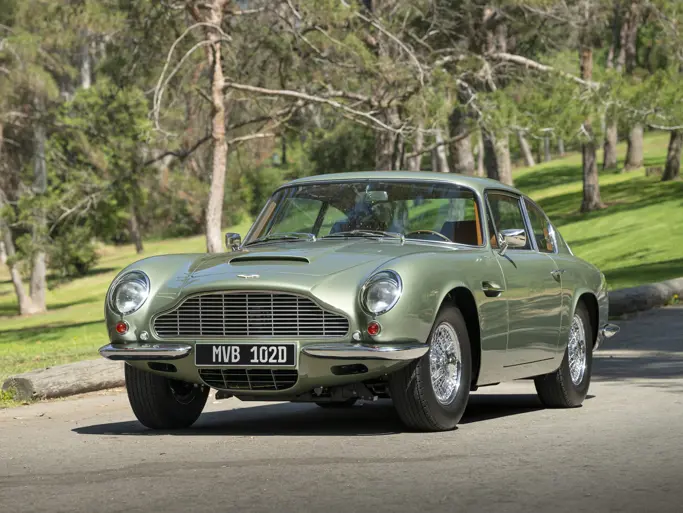 | Portola Valley, California
| Portola Valley, California
Weight: 7.8-tons (7,098-kg)
Length: 16' 4” (5.00-m)
Width: 8' 3” (2.54-m)
Height: 7' 7” (2.26-m)
Crew: 6
Armor:
Hull front: .75” (19-mm)
Turret front: .75” (19-mm)
Weapons:
-Primary
1x .50-cal M2HB heavy machine gun
-Secondary
Provision for:
5x .30-cal M1 Carbine
1x 2.36-inch Rocket Launcher (Bazooka) M9A1
-Ammunition
1,000x .50-cal
500x .30-cal Carbine
10x 2.36-inch rockets for M9A1
Engine: Hercules JXD 6-cylinder, 110-hp
Power/weight: 14.1-hp/ton
Fuel Capacity: 56-USG (211-l)
Range: 350-miles (563-km)
Speed: 55-mph (88-km/h)
The vehicle being offered, M20 Armored Utility Car, is an older restoration and is very complete. The engine runs great and drives well. The tires are in excellent shape. The exterior and interior paint are very nice. All seats are in excellent condition. The driver's instrument panel is complete. Full radio sets and various other accessories such as pioneer tools and bazooka rocket packing tubes are included.
The M20 armored utility car was designed as an armored command car and armored personnel carrier/ammunition/cargo carrier on the M8 armored car chassis. The vehicle was requested by the Tank Destroyer Command in 1942. The pilot model, designated T26, was finished in February 1943. Beginning in March 1943, it was extensively tested at Camp Hood, Texas. Testing was successful and it was standardized in April 1943 as the M10 armored utility car. However, Tank Destroyer Command already had the M10 gun motor carriage in service and there was concern that there would be confusion between the two vehicle types. Therefore, the M10 armored utility car was redesignated M20. Full scale production began at Ford in July 1943. 3,791 had been built by the time the assembly line closed in June 1945.
The M20 was used by the U.S. Army in the role it was designed for as a command and utility vehicle. It saw service in all theaters. During World War II, M20's were given to the Free French Army under the Lend-Lease program. Post-war, the M20 remained in U.S. service and saw further action in the Korean War. During the post-war period, many M20's were exported to many U.S. allies, with the French Army being the largest user of them.
Transport Cost to Storage: $660





